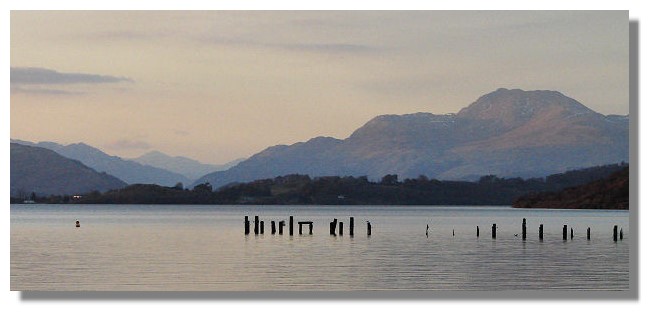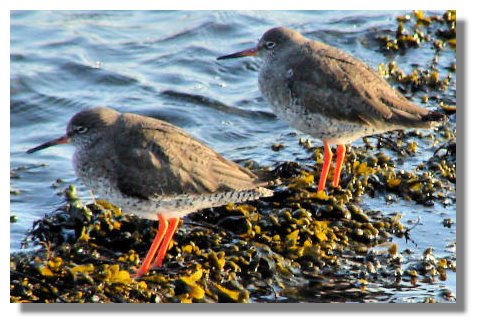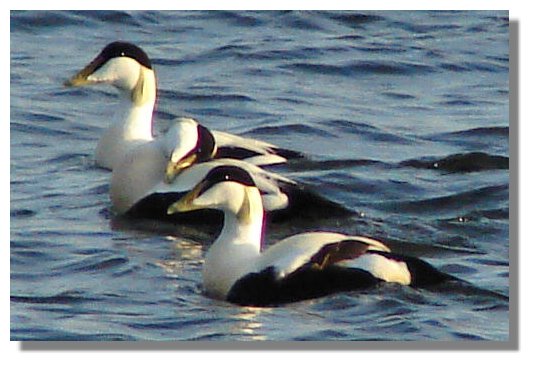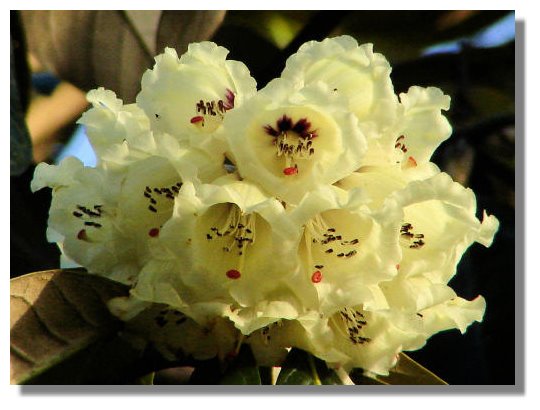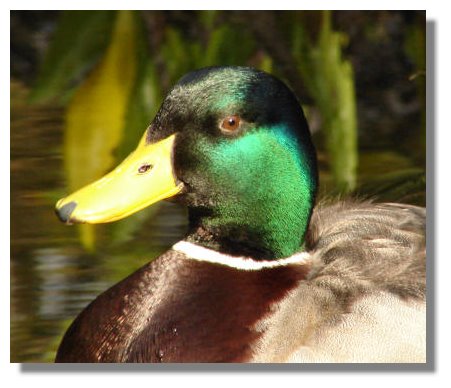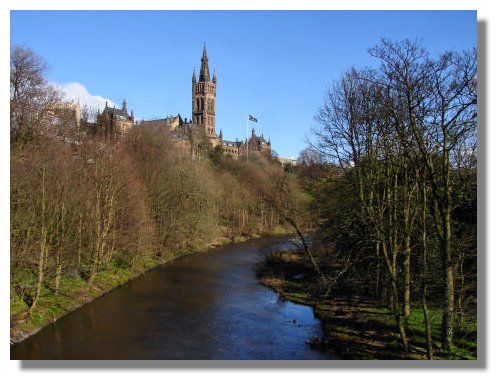Each week the Rampant Scotland Newsletter includes a number of photographs which illustrate the weather and the seasons, plus the flora and fauna of the current week around Scotland. There are often so many such graphics of Scottish subjects worth including that this separate "colour supplement" is created where some of the best pictures can be displayed in a larger format. Here is this week's crop of Scottish views!
I never get tired of taking photographs of Loch Lomond in its many moods and guises. This shot, taken in the late evening in late March is radically different from a bright, sunny summer's day - but Ben Lomond (on the right) and the mountains fading into the distance in the "gloamin" (twilight) provide their own beauty.
No problem remembering the name of these birds - Redshanks. "Shank" was an old English and Scots word for leg. These two were feeding on the shore at Helensburgh, on the Firth of Clyde. Earlier, I had disturbed one of them as I tried to get too close for a photograph. It flew off with a loud alarm call but landed beside its mate, not far way. They both kept a careful watch on me, but the telephoto lens did its work! Redshanks are found all around the coasts of Britain and Ireland.
If the Eider Duck in the middle had not decided to preen himself just as I pressed the shutter, this would have been a perfect line-abreast formation. I suppose I should be grateful that they stayed on the surface - it's not unusual to take a photo and find that they have dived under the water and all that's on the graphic is a patch of water... The joys of nature photography! This trio were part of a large group feeding in the Firth of Clyde, off Helensburgh. The lime green on the side of the male's head is most distinctive amongst UK birds.
Glenarn Garden in Helensburgh is justifiably famous for its rhododendrons, many of them early-flowering varieties. This large, private garden is open to the public from 21 March to 21st September (with donations to charity in an "honesty box"). Some of the trees there were planted in the 1850s, notably a Rhododendron falconeri at the side of the house. Various plant hunting expeditions added a great many plants over the years. When the Thornley family arrived there in 1983, there was a lot to be done to restore the gardens to their former glory. A lot has been achieved (I've even noticed the difference over recent years in particular) and the work is continuing.
The Mallard is one of the commonest ducks to be found in Britain and tends to be taken for granted. But when the sun glances over the iridescent feathers of the drake, it produces a most attractive picture.
Here is a picture of the University of Glasgow, with the river Kelvin below, on one of the many sunny days we have had recently. The university was founded in 1451 but moved to this site in 1870. The magnificent main building was designed in the Gothic style by Sir George Gilbert Scott. With its prominent position on the top of a Gilmorehill, it is visible from all over the city and beyond its boundaries.
If you want to look back at earlier editions of this Colour Supplement, there is an Index Page
